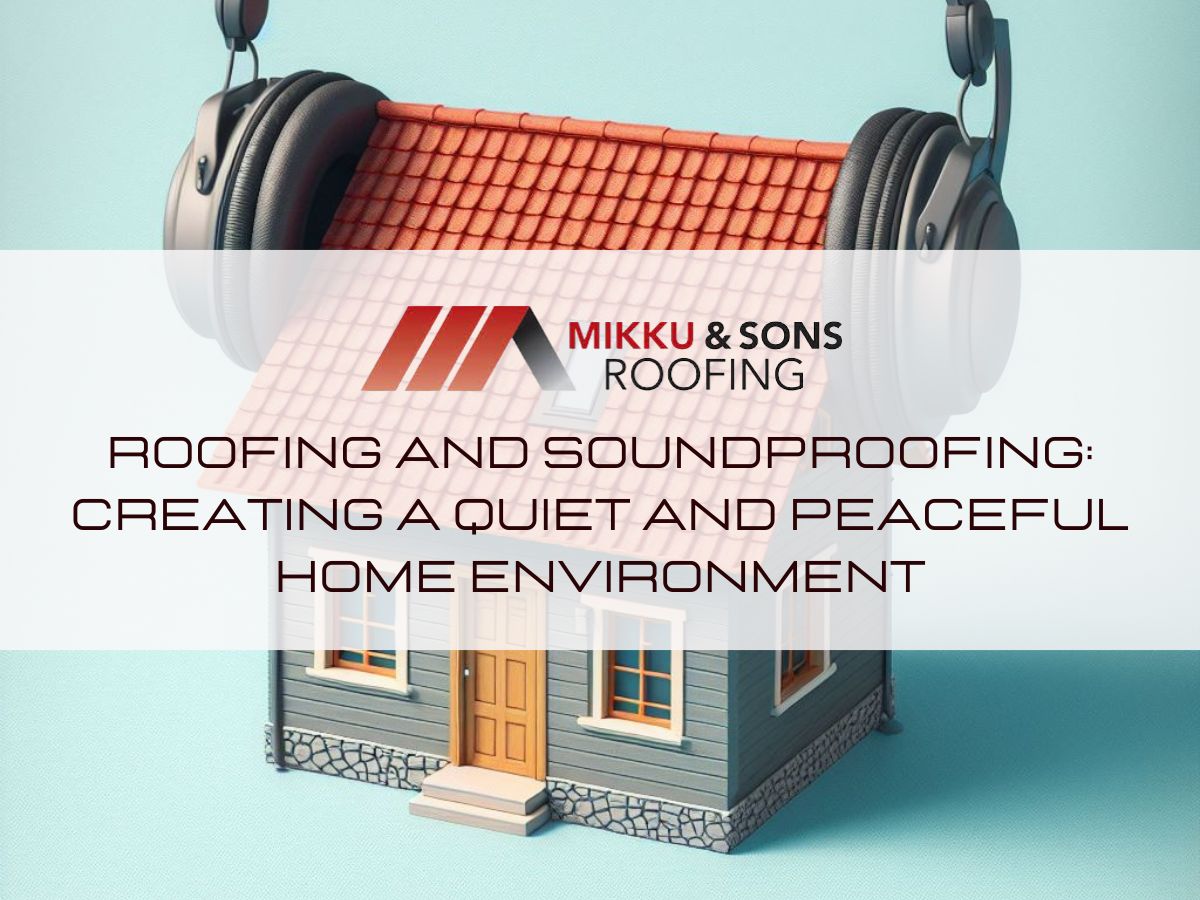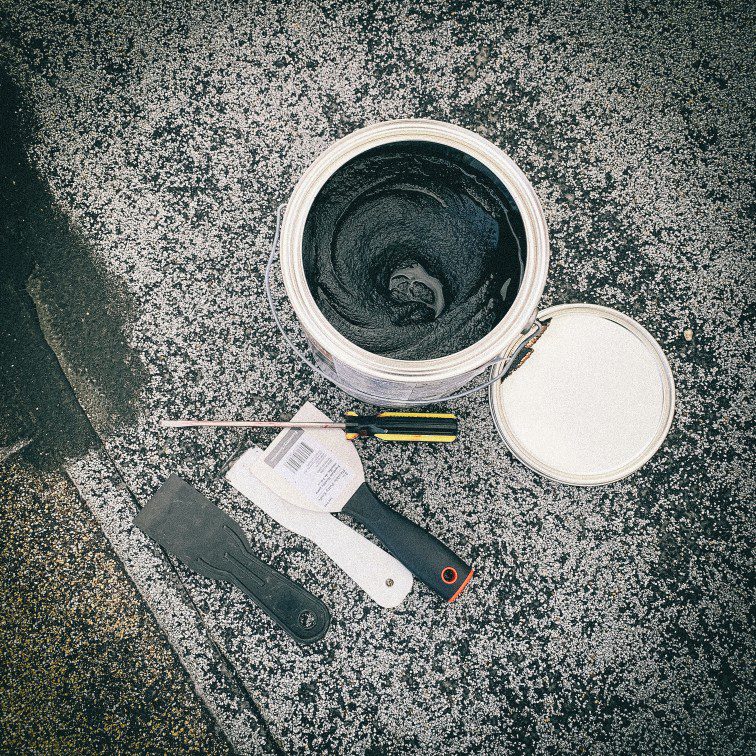

For flat roofs, roofing tar is the material of choice. Tar and gravel roofing might utilize it as the initial layer, or it can be used to patch up gaps and fractures in the roof. Learn the fundamentals of this roofing material and how to apply it by reading the information below correctly.
To repair leaks or to put on new tar and gravel roofs, roofing tar is a common choice. Roof tar is a solid and waterproof substance. These materials are often a black and smooth blend of coal tar and petroleum compounds.

Roofing tar is a flexible, long-lasting, water-resistant compound. It can withstand rain, snow, sunshine, and extreme cold.
Repairing a leaky roof is one of the riskiest home improvement chores a person can undertake. Incorrect application of roofing tar or improper walking on the roof might further damage the roof.
The best approach to deal with any significant or small roofing issues is to seek the advice of a roofing specialist.
Flat roof leaks may be fixed using a black, oily substance known as roofing tar. Oil and other petroleum products are used to make it.
The coal production process produces coal tar, a dark brown or black residue. For roofing applications, coal tar must be purified and treated.
A form of roofing tar known as coal tar roof cement is used to seal, bond or repair damaged or failing roof regions.
There is no asbestos in newer roofing tar formulas, although they may include solvents, surface adhesion agents, polymers, and minerals. Trowel-applied coal tar roof cement differs from paint- or caulk-applied tars in that it is applied using a trowel.
Black is the most common color for roofing tar compounds. However, some producers have produced lighter shades like silver and white.
It is possible to paint some roofing tar to match the roof's original color once it has dried. A tar remover may be used to get rid of the tar on your roof, but this might harm certain types of roofs.
Bitumen, tar paper, gravel, and other flat roof materials may all be repaired using roofing tar, which can also be used as an adhesive in some instances. As roofing tar compositions vary by brand and kind, choosing the right product for your needs and application is critical.
Temperatures lower than 70F will cause the product to take a long time to harden. On the other hand, Roofing tar will convert into a liquid at very high temperatures.
Tar roofing is excellent for flat and low slope roofs because of its ability to self-heal and repair leaks. It is not recommended to use roofing tar on steeply sloped roofs since it will become liquid at high temperatures and leak.
In addition, roofing tars should not be used on asphalt goods or diluted with water or other solvents since they might damage the asphalt.
Flat roofs benefit from roofing tar's excellent UV resistance, making it an ideal material option. In addition to providing wind and water resistance, roofing tar is a perfect choice for flat roofs because of the water-holding capacity of the material.
In contrast, tar is a non-renewable resource. During the application and cure processes, it might emit toxic fumes that should be avoided.
When working on a tar roof, everyone doing the installation must wear protective masks. Installing the tar on the roof while the occupants are gone is an option for contractors.
The average house owner may make the application of roofing tar, but it is recommended that they hire a professional to perform the dirty job.
Protective membranes of thick, weather-resistant hot tar are applied to a roof to withstand storms and the elements. The smooth surface enables water to flow down the roof for low and flat roofs.
To get an idea of how much tar you'll need, measure the roof and do some math. If you're buying tar, make sure you ask the right questions at the hardware shop.
Asphalt roofing tar is the most common tar for roofing. However, coal tar bitumen may be advised if the roof is steeply inclined.
Apply a foundation coat of paint to the roof. Based on the weather and the roof's form, choose the coating. Asphalt, aluminized asphalt, and elastomeric coatings are all options.
For an additional fee, the coating may be infused with gravel, which will thicken and reinforce the layer of hot tar as it is applied. Because of the coating's role as a heat-insulator, the roof will be spared damage due to the tar's extreme heat.
Tar must be transported in some manner. Tar may be poured straight from a tar truck's pipes onto a big job's roof. A steel bucket is used to transport tar to and from the roof if the area is smaller.
To prevent tar from leaking, fill the bucket 3/4 full and have a helper carry it up the ladder. If you think the bucket is too heavy, don't transport tar.
When the bucket is being carried, its fluidity causes it to fluctuate, placing you and any onlookers in danger if the bucket tilts or falls.
Pour hot tar from a corner onto the roof. Using a fiberglass mop, spread the tar over the roof in long, even strokes. Keep the layers thin and cover everything.
Tar should be rolled straight across the room, from one corner to the other. Keep hot tar from clumping or building up in any part of the building.
Tar paper should be carefully laid on the hot tar and mopped into the asphalt. To create a strong seal, pile tar paper and hot tar together and overlap them.
A ladder should be set up in the corner opposite your starting place so that you may climb down after you're done.
Use caution while handling hot tar. Keep the tar kettle at least 25 degrees below its flash point to avoid fire and explosion.
Keep combustible items like rags and wooden tools out of the kettle's path to avoid fires. Also, never set the kettle down on or near greenery.
Wear heat-resistant gloves and loose-fitting, long-sleeved shirts to avoid being burned when working with tar. Like hiking boots, shoes should have non-slip soles.
Pull your hair back and use goggles to protect your eyes.
Training in first aid may help you be prepared in case of an emergency. In the event of a burn, have a supply of cold water on hand.
Tar will harden and become sticky when it comes into touch with the skin. Removing it from the skin will exacerbate the injury and increase its severity.
To properly remove tar, keep it submerged in water and dial 911.
Supply:
Tools:
Materials: Roofing tar Foundation coat
If you're going to use roofing tar, wait until there have been many days of clear skies and no precipitation before applying it. Seventy degrees Fahrenheit is the best temperature for working.
The roofing tar may be applied as long as the temperature is above 70 degrees. If the temperature rises, the tar on your roof may begin to seep, resulting in an ugly and troublesome mess.
This is when removable tile roofing tar repairs come in handy. Internal leaks may be discovered by removing the tiles, and the leak in the interior ceiling can be sealed with roofing tar. Material like plywood or a shingle may enhance the performance of roofing tar.
Once put, the rubber is resistant to blisters, splits, and any decay because of its natural qualities. In addition to the numerous benefits already mentioned, EPDM rubber roofing has fewer drawbacks than other flat roofing options.
Gravel and pea shingle serve two key functions on a flat roof: as a "loading coat" and as a means of protection against ultraviolet radiation. To assist anchor the material underneath and reduce the likelihood of it being blown away in severe winds, use gravel as ballast.
Many commercial roofing contractors solely installing PVC flat roofs should not come as a surprise to anybody. The longest-lasting material is PVC Single-Ply Membrane. Designed to endure 15 to 30 years, it is the longest-lasting flat roof material available.
Flat roofs benefit from roofing tar's great UV resistance, making it an excellent material option. In addition to providing wind and water resistance, roofing tar is an excellent choice for flat roofs because of the water-holding capacity of the material.
Using a thin coat of bitumen primer and bitumen-based waterproofing paint on a clean concrete roof is the best technique to fix a leaky roof. A tiny piece of torch-on felt may be used to cover the crack if this isn't enough to stop the leak.
